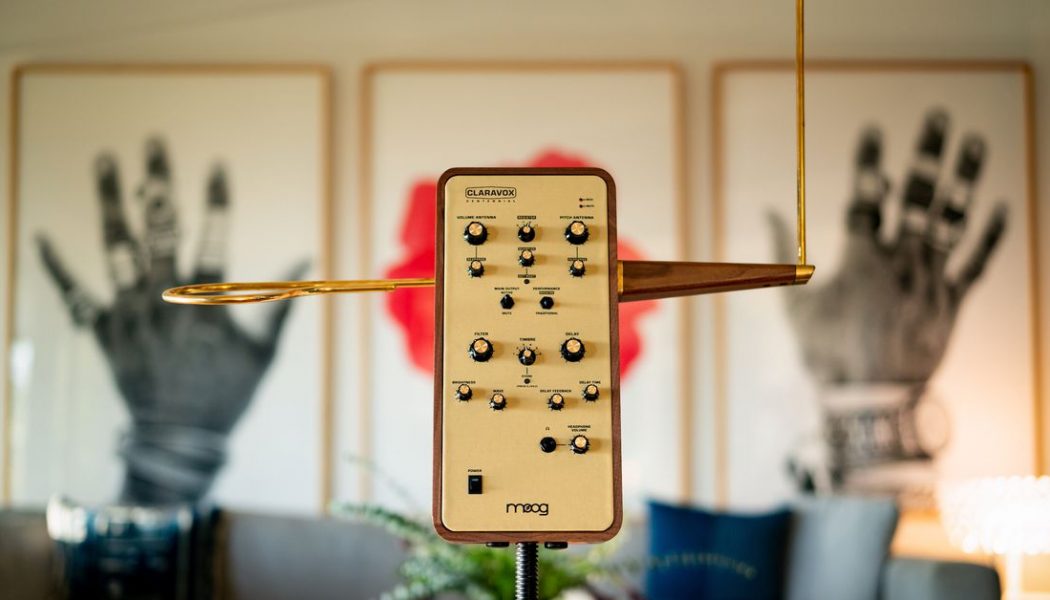
The sounds of the theremin, once the instrument of the future, have now been tingling our spines for 100 years. In commemoration, Moog is introducing its new limited-edition Claravox Centennial, named for theremin virtuosa Clara Rockmore.
Moog says the Claravox offers “the highest quality control and sound available in a theremin.” With two modes, Traditional and Modern, it enables thereminists to switch between heterodyne analog and digital oscillators. It has the same wave-shaping circuit as Moog’s Etherwave Pro theremin, and DIN MIDI, USB, and CV inputs and outputs for connection to DAWs and use as a controller. It’s also lovely just to look at, with a walnut cabinet, brass antennas, and plenty of knobs to fiddle with.
Electronic instruments, and their inventors and players, are some of the most fascinating elements of music history. When I worked in a music library, I would often spend slower shifts digging through our collections of scores and vinyls in search of graphic notations and electronic music. Clicking around the Moog site today is a joy: there’s a scrapbook timeline of the history of the theremin, old photos and videos of theremin pioneers, and an audio compilation with recordings of Rockmore, Bob Moog, and Leon Theremin.
Wow, there’s also a mini audio documentary featuring Leon Theremin, Clara Rockmore, and Bob Moog talking (and playing) electronic music. Transportive. https://t.co/ufvegFgnhq
— Matt Patches (@misterpatches) October 22, 2020
While sci-fi horror soundtracks may be the most recognizable home of the theremin’s eerie sounds, it has the (literal) range for incredibly moving renditions of classical compositions. Rockmore herself was essential in legitimizing the theremin as a concert instrument. To demonstrate the Claravox, Moog produced a rendition of “Clair de Lune” on theremin and piano, a duet in tribute to Clara Rockmore and her pianist sister.
[embedded content]
With the Claravox coming in at $1,499, you may want to adjust your budget before trying to preorder one of the limited units. But if you don’t manage to snag one, you can at least join me in listening to samples and staring longingly at the beautiful photos on Moog’s site.
The theremin, the instrument you don’t touch, the one that inspired Bob Moog’s synths, is enrapturing any time you see it played. “In a way,” writes composer Albert Glinsky, “that’s the genius of what Leon Theremin created 100 years ago: an interface that just never gets old.”









